I love references, how they operate like conversational shorthand. When I describe the main character of The Invitation as “a store-brand Chris Stapleton,” I feel clever and efficient. If brevity is the soul of wit, then references are the bees of conversation, pollinating subjects by imbuing them with meaning from someplace else. Of course, the trouble with references is how they rely on a shared cultural vocabulary, and what’s double is that often my most apt referents are obscure. For better and more often worse, I forge ahead. (Oh, to hell with universality!) I watch Raising Arizona and ask my wife, “is that John C. Reilly on a motorcycle?” She thinks I’m serious. I say my 4-month-old daughter’s flailing arms remind me of Joe Cocker and my friend humors me with a closed lip smile, but I doubt his familiarity with “Space Captain.” After reading a profile in the New Yorker, I tell my coworker that Poo-Pourri’s founder seems like “a cross between Tony Robbins and Aldous Huxley,” and from her expression I know I’ve failed.
“Sick reference, bro,” says Jonah Hill in This Is the End, just before high-fiving Jay Baruchel. “Your references are out of control; everyone knows that.” (Oh, to always hit the mark!) Yet how deceptively difficult: to connect two far-flung details takes skill, but to correctly guess beforehand that both details are known by your peers…Reader, that’s genius. All year, I’ve drawn parallels and blasted them out like buckshot, unsure if most will stick. I’ve bridged gaps ignorant of whether people know what lies on the other side. I say things like, “Tolstoy is to Sunset Boulevard as Dostoevsky is to What Ever Happened to Baby Jane,” and I want people to understand not only the antic madness of the latter, but also that I obviously prefer Dostoevsky. Alas, when I’ve done so in person, I’ve mostly misfired. When I’ve done so on Twitter, I’ve earned modest faves. Maybe here I’ll do better.
In the recognition of patterns, the world is enriched. In the recognition of too many, things get weird. One of my neighborhood’s dividing lines is Falls Road. To the east lies a hip neighborhood filled with artists and yuppies. To the west is what my realtor calls “little West Virginia.” Farther outside of Baltimore is a place called Dundalk, which some say is lousy with “waterbillies.” How uncanny, then, to sit on my porch reading Patrick Radden Keefe’s superb Say Nothing, in which Falls Road bisects the Catholic and Protestant sides of Belfast, and in which gun runners go on the lam in nearby Dundalk, County Louth.
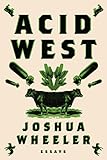 Native Baltimorean Adrienne Rich wrote of “that estranged intensity / where [man’s] mind forages alone,” and I think of that when my references don’t work. I also thought of it when, midway through her Selected Poems: 1950-2012, I read “An Atlas of the Difficult World,” set in the American southwest—chiefly because it reminded me of another book, the best one I read all year. “This is the desert where missiles are planted like corns,” Rich wrote of an area near New Mexico, and voila, there I was, foraging alone in my recollection of Joshua Wheeler’s Acid West.
Native Baltimorean Adrienne Rich wrote of “that estranged intensity / where [man’s] mind forages alone,” and I think of that when my references don’t work. I also thought of it when, midway through her Selected Poems: 1950-2012, I read “An Atlas of the Difficult World,” set in the American southwest—chiefly because it reminded me of another book, the best one I read all year. “This is the desert where missiles are planted like corns,” Rich wrote of an area near New Mexico, and voila, there I was, foraging alone in my recollection of Joshua Wheeler’s Acid West.

 Maybe I like Wheeler’s essays so much because they, too, are stuffed with references. His essays position New Mexico as the spoke of the weirdest wheel on earth, just as Sam Anderson’s Boom Town positioned Oklahoma City as the country’s microcosmic center. Both books demonstrate there’s no such thing as insignificant detail; all seeds blossom in time. “When you encounter something seemingly meaningless, you can accept the numbness of it or ache for profundity,” Wheeler wrote. “I tend toward the ache.” (Hear hear.) Wheeler’s book has the additional allure of dwelling on one of my fascinations: maudlin drinking. (His acknowledgements page shouts out four different dive bars.) “I don’t want her money,” Wheeler wrote about his grandmother, who tried to offer him some. “I’d only waste it at the bar, trying to drink myself into the future.” That line sounds straight out of The Big Clock, Kenneth Fearing’s spectacular noir novel, which like Wheeler’s book punctuates many of its drunken asides with the phrase, “Well, all right.”
Maybe I like Wheeler’s essays so much because they, too, are stuffed with references. His essays position New Mexico as the spoke of the weirdest wheel on earth, just as Sam Anderson’s Boom Town positioned Oklahoma City as the country’s microcosmic center. Both books demonstrate there’s no such thing as insignificant detail; all seeds blossom in time. “When you encounter something seemingly meaningless, you can accept the numbness of it or ache for profundity,” Wheeler wrote. “I tend toward the ache.” (Hear hear.) Wheeler’s book has the additional allure of dwelling on one of my fascinations: maudlin drinking. (His acknowledgements page shouts out four different dive bars.) “I don’t want her money,” Wheeler wrote about his grandmother, who tried to offer him some. “I’d only waste it at the bar, trying to drink myself into the future.” That line sounds straight out of The Big Clock, Kenneth Fearing’s spectacular noir novel, which like Wheeler’s book punctuates many of its drunken asides with the phrase, “Well, all right.”
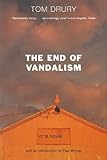
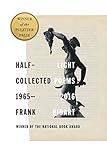

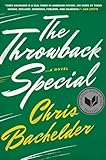


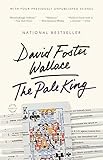

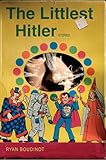

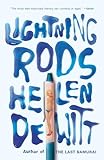 Speaking of alcohol, Hamm’s had a big year with me. There it was in Tom Drury’s The End of Vandalism, which I wish the Coen Brothers would adapt. There it was again in Alice Doesn’t Live Here Anymore, being sold cheaper in an Arizona bar than at the Crest Cafe from A Woman Under the Influence. While watching the latter film I thought, I’ve read Lucia Berlin before.
Speaking of alcohol, Hamm’s had a big year with me. There it was in Tom Drury’s The End of Vandalism, which I wish the Coen Brothers would adapt. There it was again in Alice Doesn’t Live Here Anymore, being sold cheaper in an Arizona bar than at the Crest Cafe from A Woman Under the Influence. While watching the latter film I thought, I’ve read Lucia Berlin before.
Frank Bidart wrote, “there is a beast within you // that can drink till it is // sick, but cannot drink till it is satisfied.” In Turtle Diary, Russell Hoban’s protagonist says, “I don’t feel as if I’m living unless I’m killing myself.” To thirst endlessly and to flirt with oblivion: these are the impulses pulling men together in Chris Bachelder’s The Throwback Special, the second-best book I read this year. (Those themes also power Lindsay Hunter’s Eat Only When You’re Hungry, which I read last year but need to shout out again.)
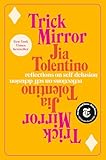

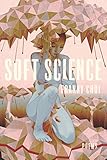

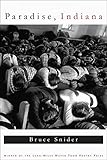
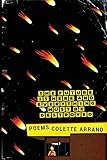 Sometimes I observe superficial patterns, and other times I observe something deeper. Reading Jia Tolentino’s “Ecstasy” essay in Trick Mirror, which is about church, that eponymous drug, Houston, and DJ Screw, I wished I was back in school so I could write about it being “in conversation with” the first story in Jennine Capó Crucet’s How to Leave Hialeah, which is about church, that same drug again, Miami, and Celia Cruz. Reading Franny Choi’s Soft Science, which was sublime, I thought a lot about the android personae in Janelle Monae’s first album, which was as well. Reading Karen Russell’s “Tornado Auction” in Orange World, the third-best book I read this year, I thought not only of its inspiration, a photograph by Andrew Moore, but also of how that fondness for twisters is echoed by lines in “Tornado Season” from Bruce Snider’s Paradise, Indiana: “I wanted to be carried— / green sky, sudden hail—with everything / I knew: blue spruce, white pine, the grey- / shingled bars of Whitley County, face / of the barber and his sharpened razor, / Marie at the Waffle House, Beau / Tucker over mufflers in his shop.” Come to think of it, 80% of the reason I bought Colette Arrand’s chapbook The Future is Here and Everything Must be Destroyed was because its cover referenced Waffle House. I’m glad I did it, and you should do the same.
Sometimes I observe superficial patterns, and other times I observe something deeper. Reading Jia Tolentino’s “Ecstasy” essay in Trick Mirror, which is about church, that eponymous drug, Houston, and DJ Screw, I wished I was back in school so I could write about it being “in conversation with” the first story in Jennine Capó Crucet’s How to Leave Hialeah, which is about church, that same drug again, Miami, and Celia Cruz. Reading Franny Choi’s Soft Science, which was sublime, I thought a lot about the android personae in Janelle Monae’s first album, which was as well. Reading Karen Russell’s “Tornado Auction” in Orange World, the third-best book I read this year, I thought not only of its inspiration, a photograph by Andrew Moore, but also of how that fondness for twisters is echoed by lines in “Tornado Season” from Bruce Snider’s Paradise, Indiana: “I wanted to be carried— / green sky, sudden hail—with everything / I knew: blue spruce, white pine, the grey- / shingled bars of Whitley County, face / of the barber and his sharpened razor, / Marie at the Waffle House, Beau / Tucker over mufflers in his shop.” Come to think of it, 80% of the reason I bought Colette Arrand’s chapbook The Future is Here and Everything Must be Destroyed was because its cover referenced Waffle House. I’m glad I did it, and you should do the same.
Other times I observe patterns that are thematic. I think the moss hunter in Hiroko Oyamada’s The Factory belongs in the canon of workplace weirdos alongside the levitating accountant in David Foster Wallace’s The Pale King, the psychotic closet-dwelling scientist in Jeff VanderMeer’s Southern Reach Trilogy, the dude with the “bee-beard” in that story from Ryan Boudinot’s The Littlest Hitler, the obvious scammers skulking about Paul Murray’s The Mark and the Void, and frankly everybody in Helen Dewitt’s Lightning Rods. From now on, when I mention this specific sub-canon, you’ll get the reference.
Elsewhere constellations were mapped by sheer happenstance. It was serendipity that my daughter, born about a week ahead of schedule, arrived one day after I watched Eraserhead, the world’s worst movie to view in those circumstances. Not two weeks prior, I’d finished Ironweed, which bears the same mantle among books. Fortunately, before both I’d read three books that, in their open dealings with its associated anxiousness, actually braced me for the realities of parenthood. Many reviewers have remarked on the titular story in Karen Russell’s Orange World being a parable of motherhood, but similar themes actually coarse through the entire book. In fact, the most affecting treatment of fatherhood I’ve ever read was in the tornado story I just referenced above. Also, while I enjoyed Lydia Kiesling’s The Golden State and Meaghan O’Connell’s And Now We Have Everything enormously when I read them months before, it was not until those first weeks home with my new daughter that their powers were revealed. This is why I tell people now: whether you’re expecting or not, these books are outstanding. They will whisper to you down the road.
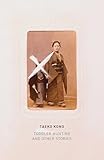

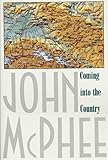



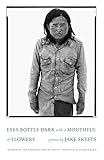

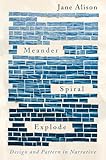 Most of the references that occur to me elude easy explanation, making them impossible to drop in casual conversation. Suffice it to say that, in one story in particular, Taeko Kōno’s Toddler-Hunting gives off big Takashi Miike vibes. Suffice it to say that the best sections of James Agee’s Let Us Now Praise Famous Men would rival the best sections of John McPhee’s Coming Into the Country were it not for Agee’s leering horniness. Suffice it to say that the narrator in Ryan Chapman’s Riots I Have Known reminds me of Sideshow Bob in a good way. (Writing to Selma Bouvier from prison: “Your latest letter caused a riot in the maximum security wing of my heart.”). Suffice it to say that when I read Jericho Brown’s The Tradition, I was struck by the line, “A bore at home, he transformed in the city. // What’s yours at home is a wolf in my city” because it made me think about how in life most men are Kevin Finnerty while in their minds most men are Tony Soprano in Las Vegas. Suffice it to say, suffice it to say, suffice it to say…
Most of the references that occur to me elude easy explanation, making them impossible to drop in casual conversation. Suffice it to say that, in one story in particular, Taeko Kōno’s Toddler-Hunting gives off big Takashi Miike vibes. Suffice it to say that the best sections of James Agee’s Let Us Now Praise Famous Men would rival the best sections of John McPhee’s Coming Into the Country were it not for Agee’s leering horniness. Suffice it to say that the narrator in Ryan Chapman’s Riots I Have Known reminds me of Sideshow Bob in a good way. (Writing to Selma Bouvier from prison: “Your latest letter caused a riot in the maximum security wing of my heart.”). Suffice it to say that when I read Jericho Brown’s The Tradition, I was struck by the line, “A bore at home, he transformed in the city. // What’s yours at home is a wolf in my city” because it made me think about how in life most men are Kevin Finnerty while in their minds most men are Tony Soprano in Las Vegas. Suffice it to say, suffice it to say, suffice it to say…
“No one ever came to my door in searching – / for you, no one, except for you -,” wrote Canisia Lubrin in Voodoo Hypothesis. There’s a recursive desire to move inward, to burrow, to coil like the Guggenheim in Bilbao. When I tell you this line haunts me as much as the one on the second page of Jake Skeets’s Eyes Bottle Dark with a Mouthful of Flowers, I mean it, and I want you to know them both automatically; I don’t want to explain them further. “Some people say history moves in a spiral,” wrote Ocean Vuong in On Earth We’re Briefly Gorgeous, a novel which deliberately lacks conflict. Of all these forms, Jane Alison’s Meander Spiral Explode has much to say, because Alison’s book is one that identifies patterns, that draws upon references to do so. It was the fourth-best book I read this year. In college, she read us a story about the Guggenheim in Bilbao.
Every day I wonder about the threshold of commonality required to make casual references, because every day I read references to supposedly canonical things I fail to grasp. These can be low-brow: if you’ve ever referred to Saved by the Bell, you’ve lost me, because I’ve never seen it. Ditto pro wrestling. These can also be high-brow: Few allusions to Greek philosophers work on me; I don’t know enough Shakespeare to get most mentions of him. Still, I possess references you cannot possibly know. Before beating USC, Vince Young said he warmed up to a chopped and screwed version of T.I.’s “Tha King.” That’s stuck with me since tenth grade. It’s been my warm-up song since—for everything, even pumpkin picking. There are some things we never lose. You might say Twitter is a project of crowdsourced reference-making: the most basic and universal observations go viral because they are the most widely understood, while deeper cultural in-jokes amuse only niche audiences—if that—even when their connections work much better. All of us are in our own orbits with the world, each viewing but one face of the cultural sphere. The one I see will always be different from yours, but damned if I won’t try to show it to you.
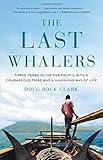
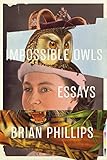 At the local brewery some months ago, I sat next to a guy in a Mississippi State quarter-zip while he waited to fill his Mississippi State-branded growler. (We were nowhere near Mississippi.) The speakers played Vampire Weekend. I put down The Last Whalers because I got distracted by reality: my coworker is the sister of Mississippi State’s basketball coach, and Ezra Koenig quoted my stepbrother in our high school yearbook. (Life’s rich pageant!) Who could read about Lamalerans at a time like that? As always, who can think of anything but that line from Brian Phillips’s outstanding collection Impossible Owls, the fifth-best book of my year: “What overwhelms is not the meaninglessness of the universe but the coexistence of an apparent meaninglessness with the astonishing interconnectedness of everything.”
At the local brewery some months ago, I sat next to a guy in a Mississippi State quarter-zip while he waited to fill his Mississippi State-branded growler. (We were nowhere near Mississippi.) The speakers played Vampire Weekend. I put down The Last Whalers because I got distracted by reality: my coworker is the sister of Mississippi State’s basketball coach, and Ezra Koenig quoted my stepbrother in our high school yearbook. (Life’s rich pageant!) Who could read about Lamalerans at a time like that? As always, who can think of anything but that line from Brian Phillips’s outstanding collection Impossible Owls, the fifth-best book of my year: “What overwhelms is not the meaninglessness of the universe but the coexistence of an apparent meaninglessness with the astonishing interconnectedness of everything.”
More from A Year in Reading 2019
Do you love Year in Reading and the amazing books and arts content that The Millions produces year round? We are asking readers for support to ensure that The Millions can stay vibrant for years to come. Please click here to learn about several simple ways you can support The Millions now.
Don’t miss: A Year in Reading 2018, 2017, 2016, 2015, 2014, 2013, 2012, 2011, 2010, 2009, 2008, 2007, 2006, 2005
The post A Year in Reading: Nick Moran appeared first on The Millions.
Source : A Year in Reading: Nick Moran













